#académie de la grande chaumière
Text

Karin Parrow (March 4, 1900 - 1984) was a Swedish painter and part of Göteborgskoloristerna. She was one of 13 kids - her big brother being the famous troubadour Evert Taube. Like him she was quite adventurous, and during her studies in Paris at the Académie de la Grande Chaumière in 1929, she married a sea captain and set off.
Her art consists of colorful and playful landscapes, still lives and portraits, and it hangs at most major Swedish museums.
Above: Badande kvinnor, no year - oil on canvas (Bohusläns museum)
#art#swedish artist#karin parrow#evert taube#göteborgskoloristerna#académie de la grande chaumière#bohusläns museum#oil on canvas#beach scene#bathing women
7 notes
·
View notes
Text
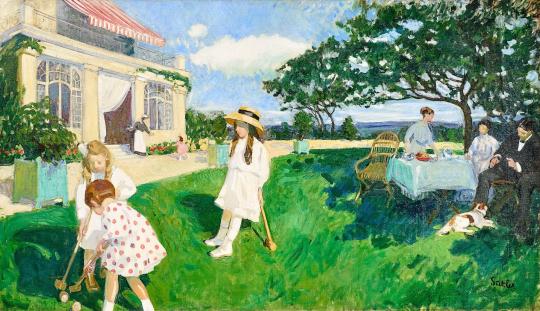
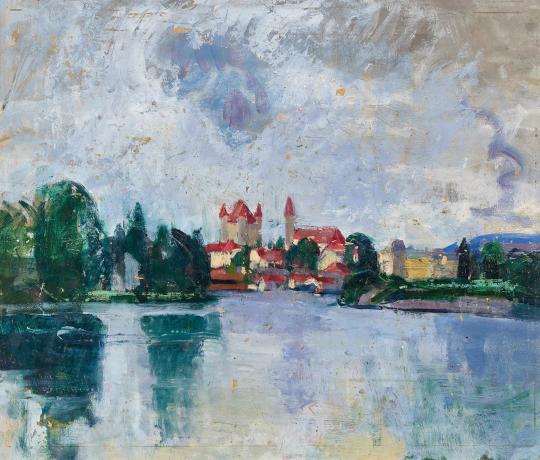
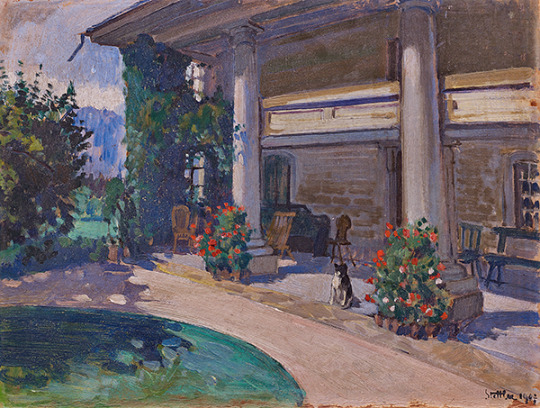

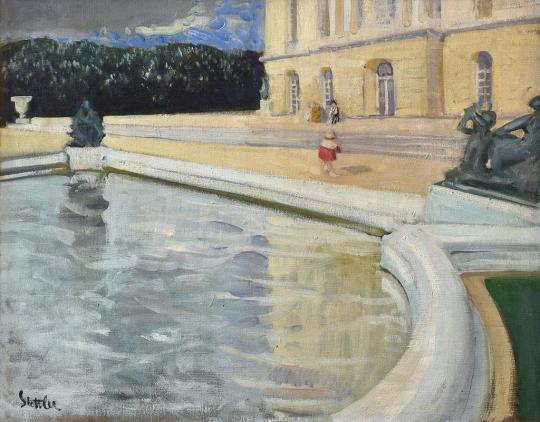
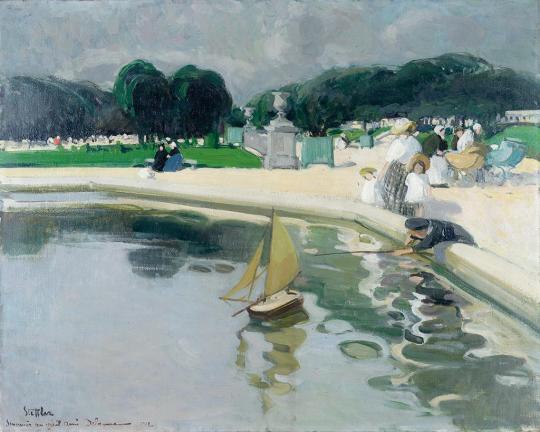




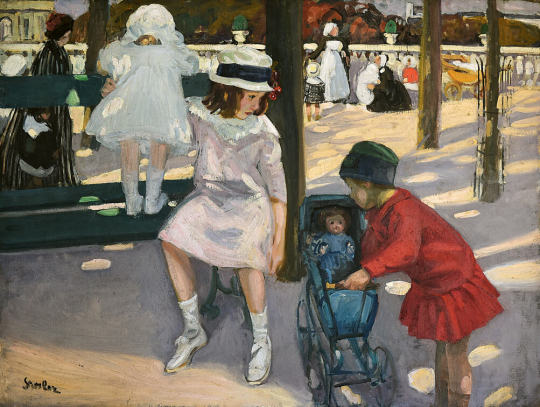
Martha Stettler (Swiss, 1870-1945)
Together with her partner Alice Dannenberg, she founded the ‘Académie de la Grande Chaumière’ in Paris in 1904, where she later became its head, much to the disdain of Swiss artist Ferdinand Hodler, who said, “We do not want women here!” He was determined to prevent women having any access to the Swiss professional association of painters and sculptors (GSMBA).
Stettler ran the academy successfully in spite of the misogynistic attitudes she was faced with in her work. It was favoured by students because of its easy-going approach to learning, and the school’s alumni included a star-studded cast; Alberto Giacometti, Meret Oppenheim and Louise Bourgeois.
Stettler also became the very first and only woman to exhibit her art at the 12th Venice Biennale in 1920. (source)
95 notes
·
View notes
Photo

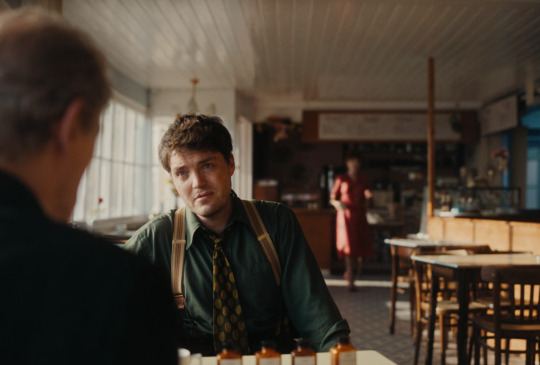
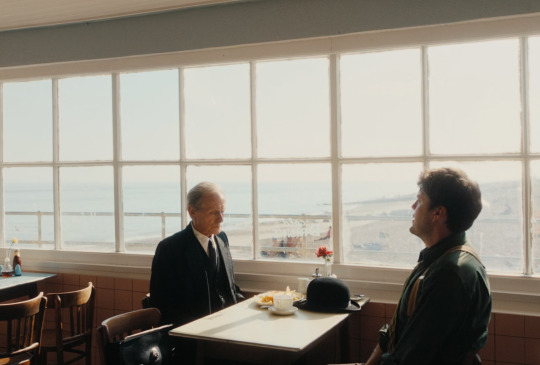
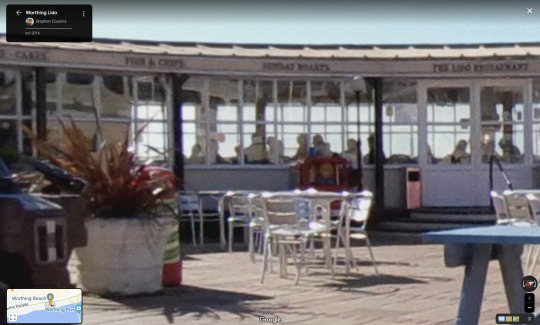
Living
Oliver Hermanus. 2022
Cafe
Académie de la Grande Chaumière, 14 Rue de la Grande Chaumière, 75006 Paris, France
See in map
See in imdb
#oliver hermanus#kazuo ishiguro#living#bill nighy#tom burke#worthing#lido#sussex#west sussex#seaside#cafe#england#united kingdom#movie#cinema#film#location#google maps#street view#2022
40 notes
·
View notes
Text
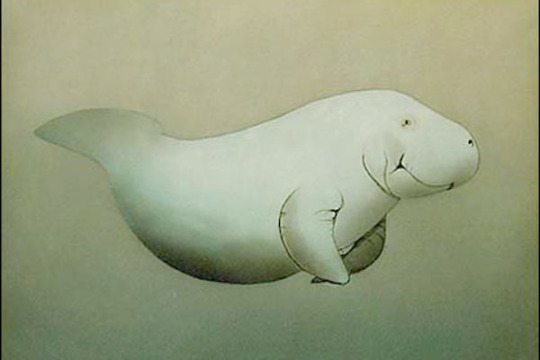

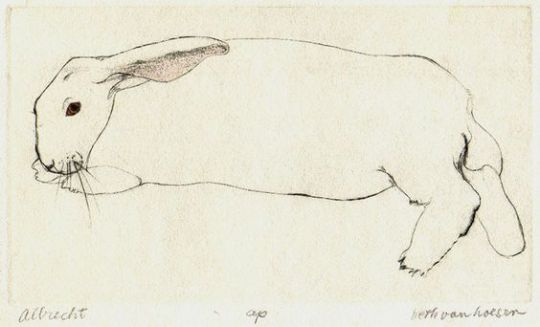
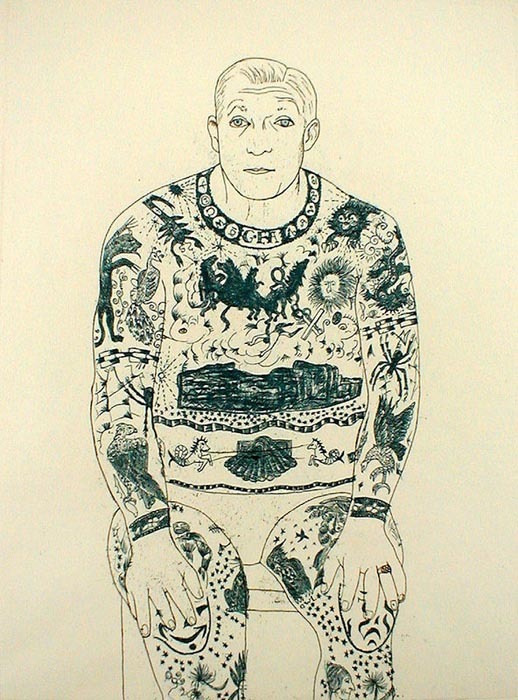

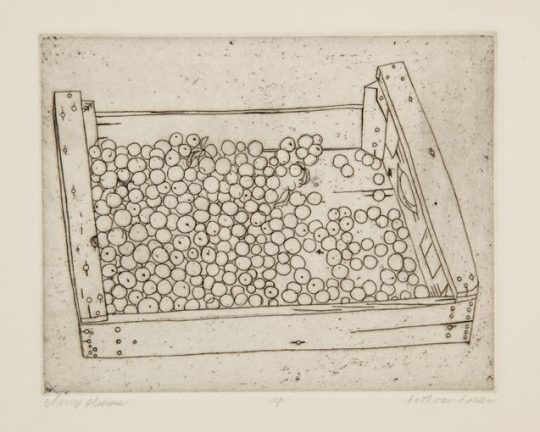

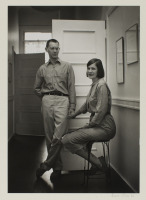
Beautiful drawings by American artist Beth Van Hoesen (1926 – 2010):
“I always liked drawing and line…one reason is that it is so portable—you can always carry a pencil and paper with you, and once it becomes a habit it is as simple as keeping a diary, only it is a visual one.”
—Beth Van Hoesen
Beth van Hoesen was born in 1926, and studied at Stanford university of Arts, where she got her bachelor degree in 1948.
After that she traveled to France and studied at the Ecole des Beaux Arts de Fontainbleau in 1948, and at the Académie Julian and Académie de la Grand Chaumière in Paris. In 1959 she settled with her husband Mark Adams, fellow artist and designer, in San Fransisco. They bought a firehouse from 1910, where they lived the next 46 years. It was known as the Firehouse studio. Beth van Hoesen became a major figure in printmaking during those years.
12 notes
·
View notes
Text
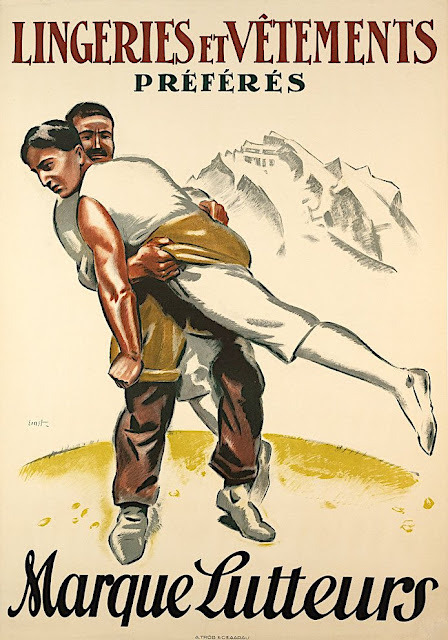
Otto Ernst (1884-1967) - Pôster de "Marque Lutteurs"
Otto Ernst fez seu aprendizado como designer gráfico em 1905, durante uma rápida viagem de estudos de um semestre a Florença, depois em 1906 e 1907 em várias academias em Paris. Em 1910, foi novamente para Paris, tornou-se aluno de Eugène Grasset na Académie de la Grande Chaumière, onde conheceu Théophile Alexandre Steinlen, e participou do Fauvismo e dos primórdios do Cubismo. A partir de 1918 viveu em Oberentfelden e depois em Aarau, trabalhando durante quase 40 anos como designer gráfico na gráfica Trüb & Co especializada em cartazes publicitários de hotéis e na produção de etiquetas ilustradas para bagagem. A partir de 1945, realizou diversas viagens à Europa e Marrocos como artista independente. A sua obra inclui paisagens a óleo e aguarelas, bem como naturezas mortas (sobretudo flores), alguns retratos e numerosos cartazes, geralmente em estilo figurativo. Muitas de suas obras podem ser encontradas no Museu Cantonal de Belas Artes de Aarau (Aargauer Kunsthaus).
5 notes
·
View notes
Text
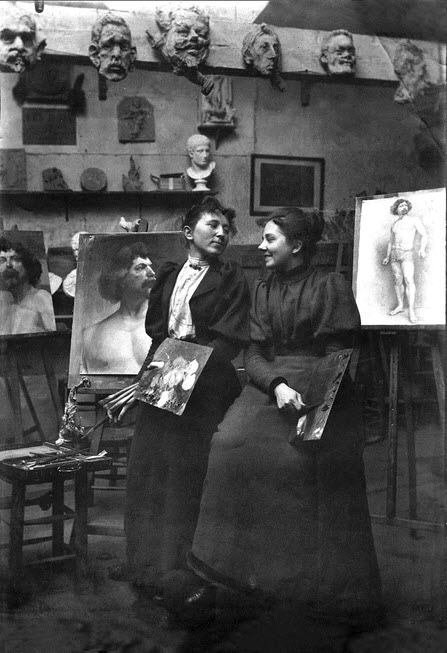
Martha Stettler (right) and Alice Dannenberg (left) at the Julian academy, Bern Kunstmuseum (1894)
Alice Dannenberg, (4 April 1861 – 28 June 1948) was an early 20th century French painter of Russian origin who cofounded an art school in Paris, the Académie de la Grande Chaumière. Via Wikipedia
Adelheid Fanny Martha Stettler (25 September 1870 – 16 December 1945) was a Swiss painter and engraver. She was one of the founders of the Académie de la Grande Chaumière, and was co-principal of the school from 1909 until 1945. Via Wikipedia
2 notes
·
View notes
Text

Carlos Bastos
Carlos Frederico Bastos (Salvador BA 1925). Painter, muralist, illustrator, draftsman, scenographer and editor. He studied at the Bahia School of Fine Arts until 1946, being a disciple of Mendonça Filho, Aguiar and Valença. Between 1944 and 1946, he studied at the National School of Fine Arts in Rio de Janeiro, where he studied with Santa Rosa, Iberê Camargo and Carlos Oswald. Still in the 1940s, he attended the Brazilian Society of Fine Arts and the Getúlio Vargas Foundation, taking private lessons with Portinari in parallel. He also does scenography at UEB with Eros Martins Gonçalves, frequenting Humberto Cozzo's studio. Years later, he studied at the Arts Students League in New York (United States), where he was taught by Harry Strongberg and Nicolay Abracheff. He continues his drawing studies at the Académie La Grande Chaumière in Paris. Returning from France, eight years later, he set up his atelier at Solar da Jaqueira in Salvador. In 1965 he edited the drawing book Igrejas, Santos e Anjos da Bahia with a preface by Jorge Amado and in 1973 he received the title of Benefactor of the City Museum from the City Hall of Salvador. During the 70s and 80s, he made illustrations for several books.
7 notes
·
View notes
Photo
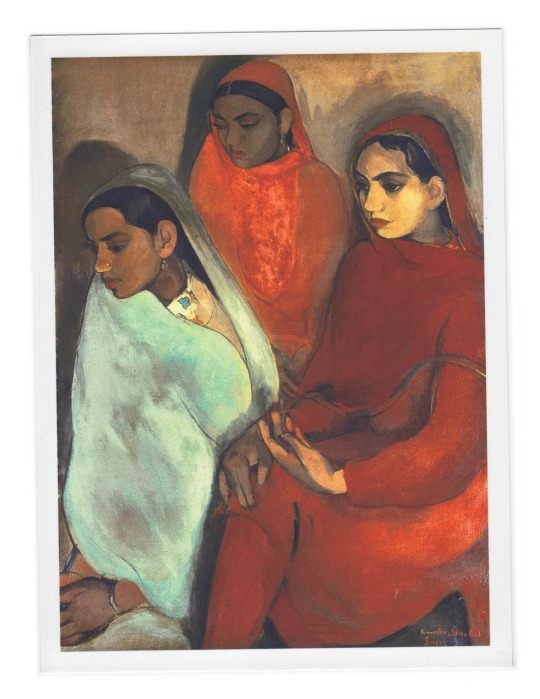
Amrita Sher-Gil: Three Girls, 1935, via The New York Times:
Sher-Gil was born in Budapest on Jan. 30, 1913, to the Hungarian-Jewish opera singer Marie Antoinette Gottesmann and Umrao Singh Sher-Gil Majithia, a Sikh aristocrat and a scholar of Persian and Sanskrit. She began taking formal art lessons at age 8, when her family moved to Summer Hill, Shimla, in northern India.
At 16, she moved to Paris and continued studying art, first at the Académie de la Grande Chaumière and later at the École des Beaux-Arts. She had early success.
Her 1932 painting Young Girls received a gold medal in 1933 at the Paris Salon, the renowned art show. It depicts her sister, Indira, wearing European clothing and a look of confidence while sitting with a partially undressed friend, Denise Proutaux, whose face is obscured by her hair — one woman bold and daring and another reserved and hidden. The painting reflects the different aspects of Sher-Gil’s personality — outgoing and sociable, as she was known among those who encountered her at Parisian parties, or tucked away and painting vigorously....
Despite being acclaimed for her work, Sher-Gil felt unfulfilled in Paris. She wrote that she was “haunted by an intense longing to return to India, feeling in some strange inexplicable way that there lay my destiny as a painter.”
She went back in 1935, and found the inspiration she needed as she traveled around the country and reconnected with its people.
5 notes
·
View notes
Link
#Cassandre#chièCassandre#graficapubblicitaria#ideatorelogoYvesSaintLaurent#Maestrograficapubblicitaria
0 notes
Text
Laura Wheeler Waring (1887-1948) pintora y educadora estadounidense.

Nació en Connecticut, y fue la cuarta de los seis hijos del matrimonio formado por Mary (nacida Freeman) y el reverendo Robert Foster Wheeler. Su madre era hija de Amos Noë Freeman, un ministro presbiteriano, y Christiana Williams Freeman, conocida por sus actividades antiesclavistas en el ferrocarril subterráneo en Portland, Maine y Brooklyn, Nueva York.
Se graduó de Hartford Public High School en 1906. Estudió en la Pennsylvania Academy of the Fine Arts en Filadelfia, graduándose en 1914.

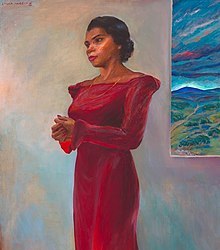
En 1906, comenzó a enseñar a tiempo parcial en Filadelfia, en la Cheyney Training School for Teachers. Allí impartió clases de pintura y música hasta 1914, fecha en la que viajó a Europa.
La ocupación en Cheyney le consumía mucho tiempo, ya que era un internado y a menudo trabajaba por las tardes y los domingos. Esta situación limitó bastante las horas dedicadas a desarrollar su arte; lo que se tradujo en que el período comprendido entre 1906 y 1914 fuera de poca producción pictórica.
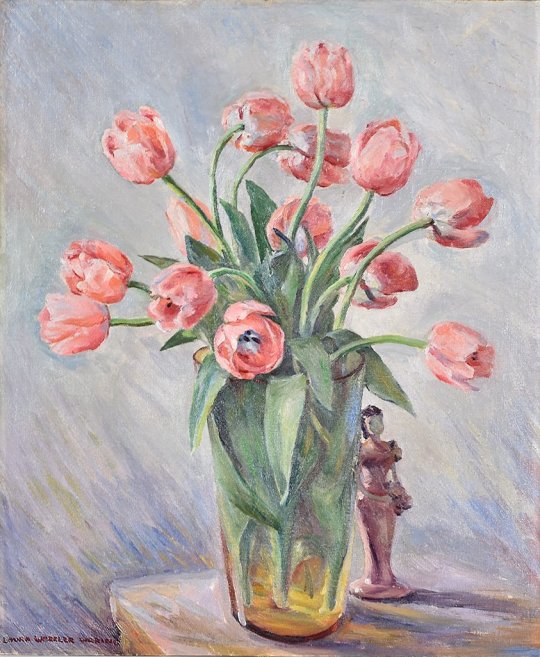
Además, para sacar un dinero extra, dedicó veranos enteros a enseñar dibujo en Harvard y en Columbia. Después de regresar de Europa, continuó trabajando en Cheyne durante más de treinta años. En sus últimos años allí fue directora de los programas de arte.

En 1914, gracias a la Beca William E. Cresson Memorial de la Pennsylvania Academy of the Fine Arts, pudo viajar a Europa, donde estudió en la Academia de la Grande Chaumière en París (Francia) y viajó por Gran Bretaña. Mientras vivía en París, frecuentaba los Jardines de Luxemburgo, lo que favoreció la creación de "Le Parc Du Luxembourg" (1918), óleo sobre lienzo, basado en un boceto que hizo durante una de sus visitas recurrentes.

La autora también pasó mucho tiempo en el Museo del Louvre estudiando a Claude Monet, Édouard Manet, Camille Corot y Paul Cézanne. "Pensé una y otra vez cuán poco se revela la belleza de las imágenes realmente grandiosas en las reproducciones que vemos y con qué libertad y con qué facilidad pintan los grandes maestros".
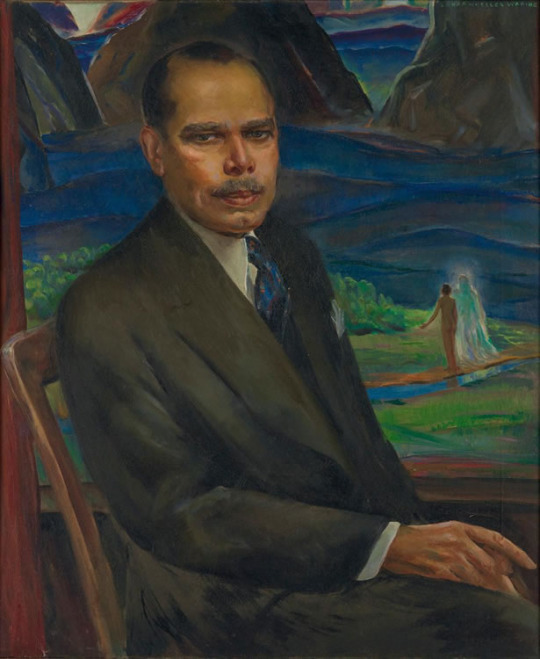
Planeó viajar también a Suiza, Italia, Alemania y los Países Bajos, pero su viaje se truncó cuando se declaró la Primera Guerra Mundial. Después de estar en Europa durante tres meses, tuvo que regresar a los Estados Unidos.
El viaje en ese momento tuvo muy poco efecto en su carrera, aunque a la larga resultó de una gran influencia en ella y en su trabajo como artista. Recibir la beca le dio tiempo para evolucionar como artista y, como el premio era muy apreciado, también ganó publicidad.
Tras el final de la guerra, regresó a París en junio de 1924. Su segundo viaje a París fue considerado como un punto de inflexión en su estilo y en su carrera. Ella misma lo describió como el período más motivador para su arte, el "único período ininterrumpido de la vida en el que como artista he gozado de un ambiente y unos compañeros propicios, que fueron un constante estímulo e inspiración".
Durante aproximadamente cuatro meses, vivió en Francia, absorbiendo la cultura y el estilo de vida francés. Comenzó a pintar muchos retratos y en octubre se matriculó en la Académie de la Grande Chaumiére, donde amplió sus conocimientos de pintura. En lugar de tonos pastel suaves, pintó un método más vibrante y realista. Su uso de colores vivos, luz y atmósfera en este trabajo es característico de la personalidad pictórica que estableció después de este viaje a Europa y que continuó a lo largo de su carrera.

Wheeler se casó con Walter Waring el 23 de junio de 1927. Era de Filadelfia y trabajó en el sistema de escuelas públicas como profesor. Cuando se casaron por primera vez, el dinero era escaso, por lo que retrasaron su luna de miel dos años. En 1929, los recién casados viajaron a Francia, pasando allí más de dos meses. No tuvieron hijos.
Murió en su casa de Filadelfia después de una larga enfermedad.
Un año después, la Galería de Arte de la Universidad de Howard en Washington D. C., realizó una exposición de arte en su honor.
Además de una exposición póstuma en la Universidad Howard en 1949, no se cree que las pinturas de Wheeler hechas en París se hayan exhibido y se desconoce su paradero. Además de pintar, escribió e ilustró una historia corta con su amiga y novelista Jessie Fauset, que la acompañó en este viaje a Francia.
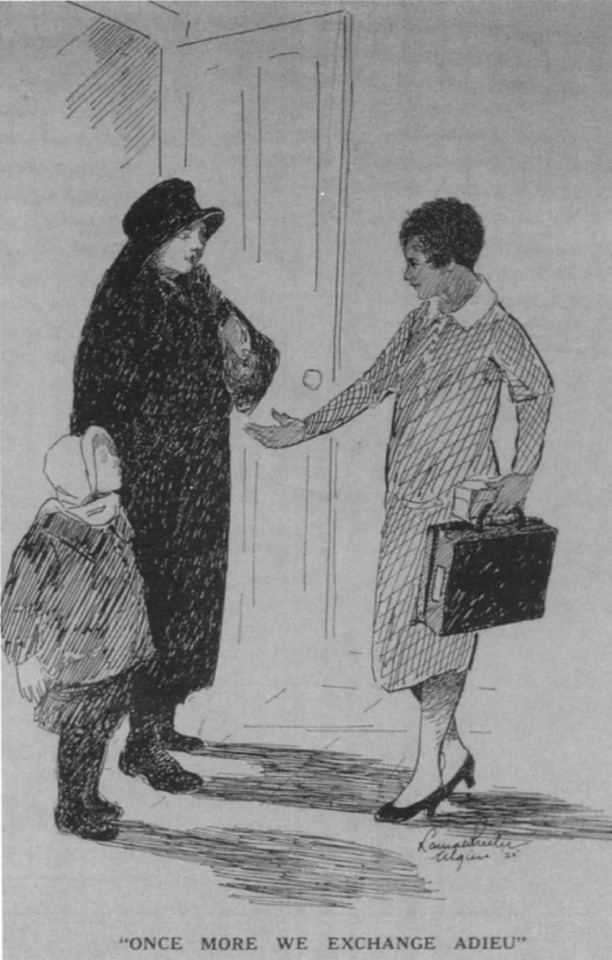
Le ponemos cara.

0 notes
Text
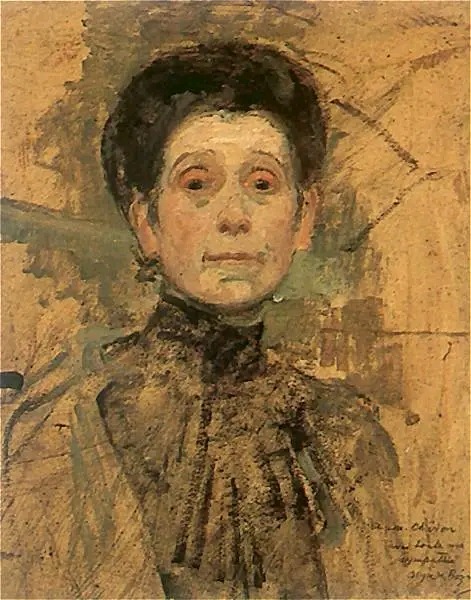
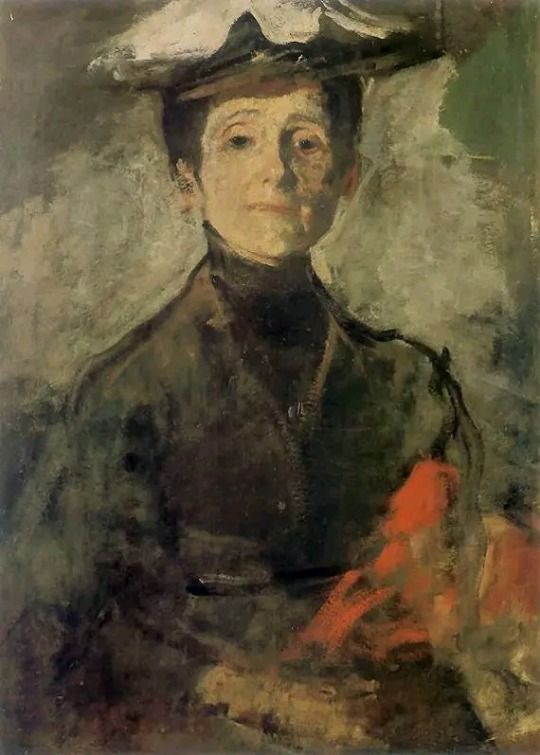


OLGA BOZNANSKA. AUTO-RETRATOS
Olga Boznańska, nascida em 15 de abril de 1865 em Cracóvia, falecida em 26 de outubro de 1940 em Paris, é uma pintora polaca, ligada ao movimento modernista. Ela passou a maior parte de sua carreira na França.
Biografia
Olga Boznańska é filha de Adam Nowina Boznański, um engenheiro ferroviário, e da francesa Eugénie Mondan. Ela tem uma irmã, Izabela.
Ela aprendeu desenho com Józef Siedlecki e Kazimierz Pochwalski. De 1886 a 1890, estudou nas escolas particulares de Karl Kricheldorf e Wilhelm Dürr em Munique, e a partir de então dedicou-se à pintura.
Ela ganhou uma medalha de ouro em Viena em 1894.
Em 1898, mudou-se para Paris, onde começou a expor na Société nationale des beaux-arts (SNBA), da qual, em 1904, tornou-se membro. Ela ensina pintura na Académie Colarossi e também na Académie de la Grande Chaumière.
Olga Boznańska foi condecorada com a Legião de Honra em 1912, depois com a Ordem da Polonia Restituta em 1938.
0 notes
Text

Brita Barnekow (Jan. 4, 1868 - 1936) was a Danish painter who studied at the Art School for Women, affiliated with the Royal Academy, and later in Paris at the Académie de la Grande Chaumière. She traveled to Italy on numerous occasions, and this work is a result of her travels there:
Italiensk landskab med ruiner, 1901 - oil on canvas (Privately owned)
#art#danish painter#brita barnekow#1900s#académie de la grande chaumière#danish royal academy of fine arts#art school for women#landscape painting#oil on canvas#italian landscape#ruins
7 notes
·
View notes
Text
Paritosh Sen

When the calcutta Group, an artists’ collective of which Paritosh sen was a founder member, emerged on the Indian visual art scenario, it intended to turn the tide away from the prevailing dominant that was marked, still, by the revivalism of the Bengal school. significantly, in 1953, after a decade of its collective effort, the booklet accompanying their exhibition mentioned: ‘the guiding motto of our Group is best expressed in the slogan “art should be international and inter-dependent”. In other words, our art cannot progress or develop if we always look back to our past glories and cling to our old traditions at all cost. the vast new world of art, rich and infinitely varied, created by Masters the world over in all ages, beckons us’.
It further declared: ‘In the West, kings have long been dethroned and the reins of the state have passed into the hands of the common man. today the artists no longer decorate the baroque palaces of kings or the interior of the chapels but work independently in their studios or decorate the communal buildings. the great french movements in art—Impressionism, cubism, surrealism, etc.—all evolved through this changed ideal in art. such a movement is under way in our country too.’
You should also check -PARITOSH SEN AND THE ART OF HUMOUR IN AN INDEPENDENT NATION
While one might justifiably consider this as a retrospective statement, it nevertheless forms an index to the aims and objectives in the group’s collective practice, and highlights the points of reference for its transforming visual language; it is clearly evident that the adoption from a wide range of options between Impressionism and surrealism was viewed as a springboard that could catapult the artists towards the optimism of universal comprehensibility of their personal visual languages, an attempt to ‘bridge the gap’ brought about by colonial experience.
The experience of the collective remained ingrained, even if subliminally, as its members moved on towards their individual.
TIMELINE
The artist is born on October 18 in dacca (now Dhaka, in Bangladesh).
1936-40
Studies at Government school of art and craft, Madras, training under DP Roy Chowdhury.
1940
Moves to calcutta and comes across books on european art and artists such as Monet, cezanne, van Gogh and Gauguin, which are imported to cater to the needs of the soldiers of the allied forces in the city. sen’s work begins to reflect certain changes due to this exposure: an unrestrained palette, bold lines, and an almost pointillist technique.
He joins as art teacher at daly college, Indore.
1943
Forms calcutta Group, the first Indian modernist artist collective that consciously draws on european modernism. fellow artists include Gopal Ghose, prodosh das Gupta, Gobardhan ash, subho tagore, rathin Maitra, and rabin Mondal. the group’s guiding slogan—‘Man is supreme, there is none above him’—and inaugural exhibition creates a stir in the art community.
1949
Seeing an advertisement for a passage to Liverpool for £35 via the scindia steam navigation company, sen finds ways to collect enough money for the journey as well as clothes. He visits Michael Brown, the editor of The Illustrated Weekly of India, who commissions the artist to design six covers at rs. 200 each. Arriving in London, he earns money for his final destination—Paris— freelancing for the Indian section of B.B.c., and the occasional sale of his paintings.
1950
Surendra Singh Alirajpur, the second secretary at the Indian embassy in Belgium, also an old student of Indore’s daly college, organises an exhibition of sen’s works in Brussels. He is the first Indian artist to exhibit in Brussels and the show is a sell-out, providing sen with enough money to live in paris for a year
He arrives in paris to study at andre Lhote’s school, académie de la Grande chaumière, École des Beaux-arts (mural painting) and at École du Louvre (history of painting), paris With the help of nirode Majumder, sen, and fellow artist sankho chaudhuri, visit Brancusi in his studio in Montparnasse.
Paritosh Sen is heavily influenced by the styles and works of artists such as Picasso, Matisse, and Brancusi, which is evident in his use of strong, bold lines, mixed palette and overall composition.
1953
He attends the inauguration ceremony of the annual art exhibition, salon de Mai, in Paris, and comes face to face with picasso. the next day sen visits picasso in his apartment-cum-studio at rue Gay Lussac to show the master his works. picasso offers to organise an exhibition for him. However, sen has made up his mind to return to India.
1954
Returns to calcutta. although upset by the poverty around him, he is hopeful when he witnesses groups of rickshawallahs and others singing and dancing after a long day’s work, and thus begins to paint works with everyday life as his theme. Moves to Netarhat near Ranchi to join netarhat Vidyalaya as art teacher. the green, rugged landscape of netarhat and its locals find their way into his compositions.
1956
Returns to calcutta and joins regional Institute of printing technology, Jadavpur, as a layout and design teacher.
Holds an exhibition of his recent works at artistry House (now park Hotel) which draws a lot of critical applause from the art community.
1962
Holds a solo exhibition, based on Indian ragas and raginis, in London.
He is invited by the Government of France to spend a year in paris during which he designs the Bengali typeface, based on Rabindranath Tagore’s handwriting.
In the same year, the West Bengal government commissions a documentary on his work.
Late 1960s
Sen’s works turn darker to reflect his ideological support for the naxalite movement.
1967
Prime Minister Indira Gandhi unveils Paritosh sen’s portrait of Jawaharlal nehru in Hyderabad.
1968
Sen creates a series of new paintings reflecting human anguish and turbulence. the titles of the paintings are revealing enough: The Human Condition, Man Descending Through Space, The Fall, and so on, paints portraits, two of them commemorating the famous singer Ustad Bade Gulam ali Khan. for sen, these works present the perfect amalgamation of his love for Indian music as well as his own strength as an artist. santi p. chowdhury writes, ‘one could stand before the canvases and hear the Ustad sing.
The bold, black lines in his work give way to a burst of overlapping colours such as green, blue, red, yellow, and brown.

1969
Leaves for europe towards the end of the year, with a grant from the french government.
1970-71
Receives a grant from the John D. Rockefeller III fund, allowing him to travel to, and work in, USA. Here, he predominantly paints expressionist canvases inspired by de Kooning.
1971
the Bangladesh war has lateral political and cultural effects on West Bengal. sen is unable to work for a while on his return as he is affected emotionally due to political and social unrest.
Late-1970s
As a response to political turmoil, sen creates a series of works with figures clad in a dhoti with garlands around their necks. Laden with irony and humour, the characters are meant to represent the political bigwigs of the time.
1980s
He begins to focus on figures and faces of men and women across all classes.
1981
Serves as a visiting professor at Maryland Institute of art, Baltimore, and also lectures on contemporary Indian art at various centres and institutes in U.s.a. His exposure to racial riots in America results in his Isabelle series of paintings.
1986
His story, A Tree in My Village, is published by national Institute of design, ahmedabad. the text is designed in sen’s own calligraphy and he also illustrates the folios.
Is appointed commissioner of the Indian section of the Havana Biennale II, cuba.
Is invited to speak on Indian contemporary painting at Loomis chaffee school by allan Lundie Wise Lecture fund, Windsor, U.SA, receives fellowship from Lalit Kala akademi, New Delhi.
A documentary is made on him by doordarshan, calcutta, titled One Day in the Life of a Celebrity.
1996
publishes Abu Symbol, Picasso O Anyanya Tirthe. the book, a tribute to picasso and Brancusi, describes his visit to their studios and his travels and life in paris. Publishes his autobiography, Zindabahar.
1998
Is honoured with the Hirachand dugar award.
2002
As recognition of his significant contribution to the arts, the Fench Government confers on him the L’officier de l’orde des arts et des lettres, which is the order of arts and Letters.
2004
Receives Lalit Kala ratna from Lalit Kala akademi, new delhi.
2006
Holds a joint show with Tyeb Mehta at Gallery one, London.
2008
Passes away in October.
1 note
·
View note
Photo

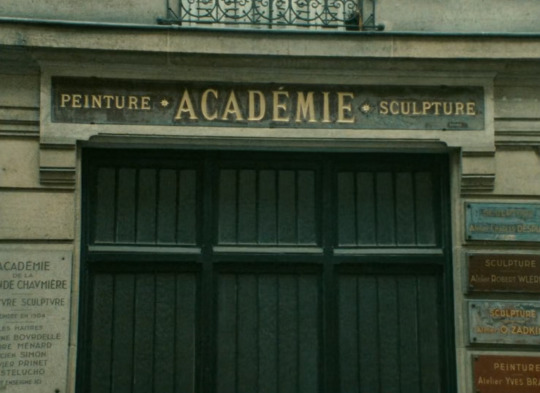

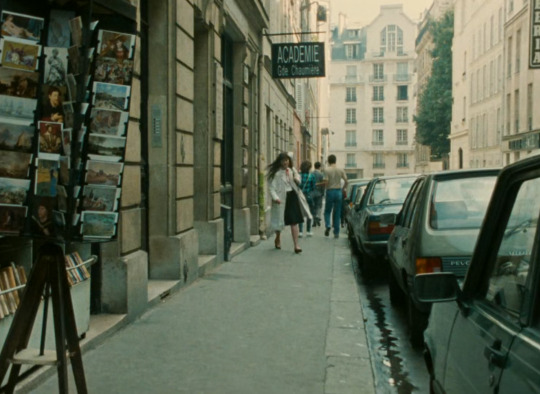
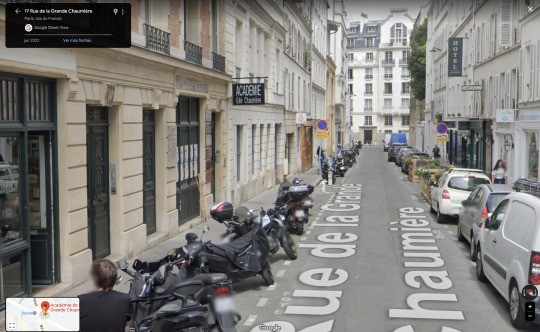
Quatre Aventures de Reinette et Mirabelle / Four Adventures of Reinette and Mirabelle
Éric Rohmer. 1987
Art School
Académie de la Grande Chaumière, 14 Rue de la Grande Chaumière, 75006 Paris, France
See in map
See in imdb
#eric rohmer#quatre aventures de reinette et mirabelle#four adventures of reinette and mirabelle#joëlle miquel#art school#painter#movie#cinema#film#location#google maps#street view#1987#nestor almendros
41 notes
·
View notes
Text
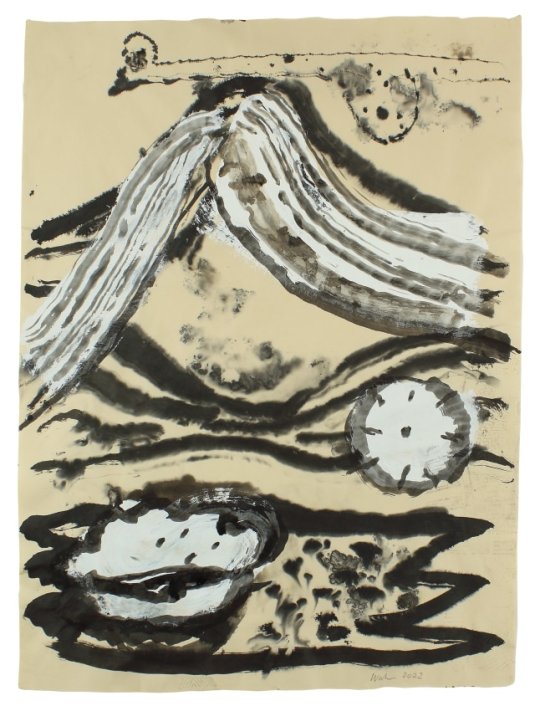

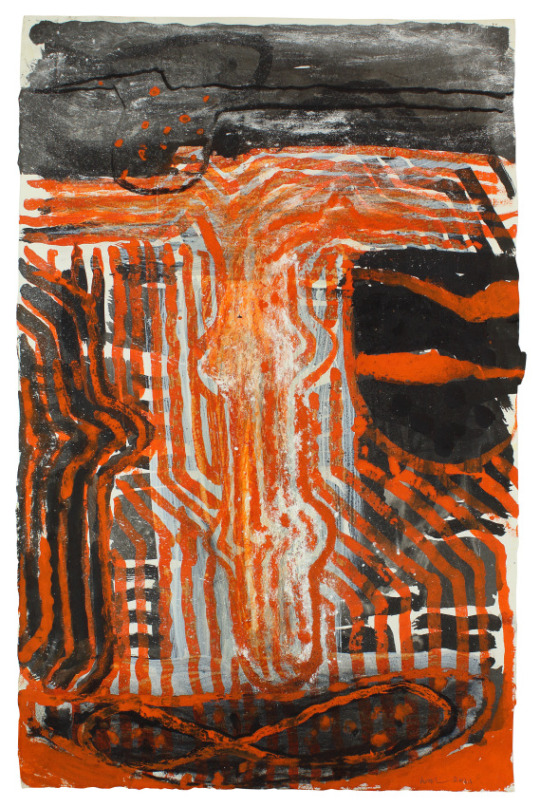
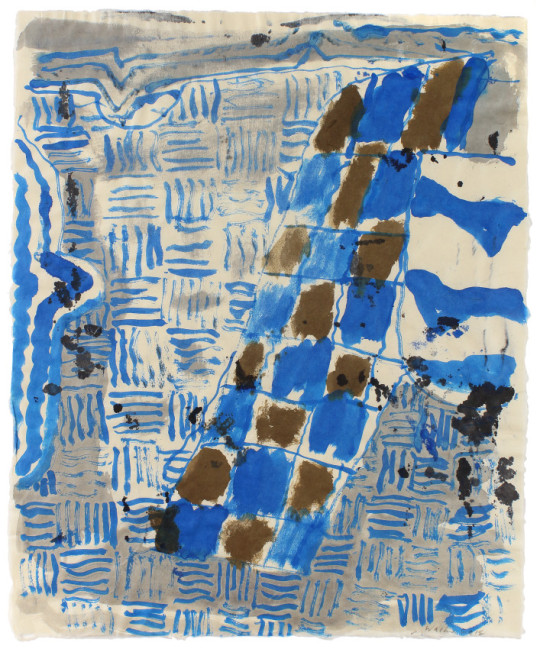

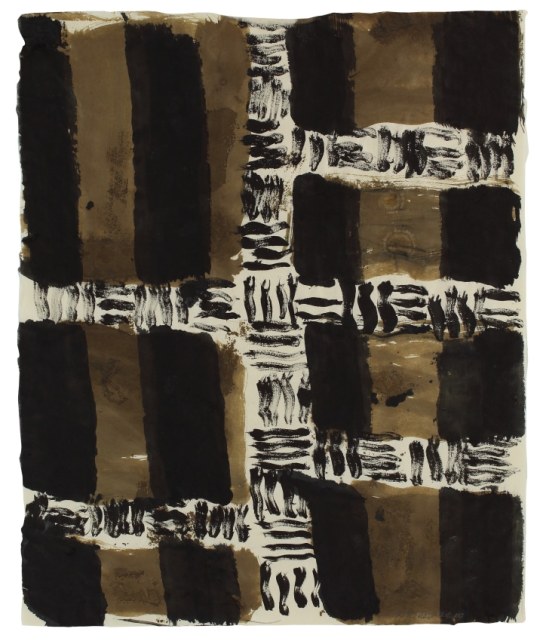



John Walker (born 1939, Birmingham, England). He studied at Birmingham College of Art (1956-1960), and continued his studies at The British School in Rome (1960-1961), and the Académie de la Grande Chaumière, Paris (1961-1963).
John Walker resides and works in Boston, Massachusetts and in South Bristol, Maine.
He has had solo exhibitions at the Museum of Modern Art in NY; The Phillips Collection in DC; The Tate Gallery, London; The Hayward Gallery in London.
10 notes
·
View notes
Text
Paloma Picasso

Paloma Picasso is a renowned fashion designer, philanthropist and businesswoman. She is best known for her jewellery designs and perfume range created under the name of Yves Saint Laurent. Paloma has gained international recognition in the fashion industry due to her timeless and striking jewellery collections, which combine contemporary and classic elements. She is also well-known for her advocacy work, having worked extensively with UNICEF on projects in Southeast Asia. Here’s an overview of Paloma's life and career:
Early Life and Education
Paloma Picasso was born Maria Christina Paloma Vega Lopez-Cambil in Madrid, Spain on April 19th 1949. Her family home was located just outside Paris. From an early age, Picasso was surrounded by art; both of her parents were painters - artist Eva Gonzalez de la Camara and artist Pablo Picasso. When she was 18 years old, she moved to Paris to study at the École des Beaux Arts and then at the Académie de la Grande Chaumière.
Career Beginnings
In 1968, Paloma began working as assistant designer for Yves Saint Laurent (YSL). During this time she also began designing under her own name with smaller projects such as scarves, belts, bags etc., as well as metal jewellery for YSL's haute couture collection. In 1979 Paloma made history by creating one of the first designer fragrances “Lovely Magic” with L'Oréal which boosted its sales hugely. Eventually the highly successful fragrance line including ‘Paloma picasso para femme’ launched in 1984 followed by other women's perfumes like 'Petit et grand'. However Picasso's biggest project with YSL was yet to come - the jewellery line 'Tresor Classic'. The Tresor Collection included simple elegance pieces designed with diamonds and precious stones making them alluring but wearable at same time, charming signature designs that every woman can recognize!
Philanthropy
Throughout her career she has been actively involved in charity works particularly focusing on children's health issues. In particular she had long term collaboration with UNICEF since 1982 when she took part in a health care mission to SouthEast Asia to provide help for people affected by oil slicks resulting from the 1979 Gulf crisis . As a result Palomas' passionate work with UNICEF led to become honorary ambassador of the organisation offering funds detailing 3 million dollars over 10 years toward the HIV/Aids programme . Similarly, besides being part of Korean aid projects , the sweetheart necklace pioneered through a partnership between Tiffany & CO became another charitable product where 20% of purchases were given back towards UNICEF resources .
Conclusion
Paloma Picasso is a truly inspirational figure who has achieved immeasurable success not only within the fashion industry but also through charity works worldwide dating back more than three decades ago ! With numerous recognitions including an award from United Nations Children Fund (UNICEF ) it can be seen that legacy will live on truly making something special!
Where can I find her artwork for sale?
Her artwork is for sale through her own website, as well as through retail stores and galleries in the area. You can also find her work online from ecommerce sites such as Bidsquare and eBay, or other sites such as Saatchi Art, the largest global art marketplace. Additionally, if you are interested in buying an original piece of her artwork, she has a few galleries around the country that display her works. Whether you’re looking to buy prints or originals, there are plenty of options available to choose from.
Are you looking to buy the artwork of a talented artist? Are you curious about where to find it? This article will provide an overview of some of the places where her artwork is available for sale.
Buy Artwork Directly From the Artist’s Website
The easiest and most direct way to buy an artist’s artwork is through their own website. This allows buyers to purchase directly from the artist, so they're guaranteed authentic pieces at fair prices. Artists often list their work, along with any available sizes and prices on their websites.
Visit Local Art Galleries or Art Fairs
Local art galleries or art fairs are great places to purchase unique artwork from local artists and those from surrounding areas. These events often bring together many different styles of artwork and offer a variety of options that can be purchased from trusted sources.
Check Out Online Stores Like Bidsquare
Bidsquare is an online store devoted solely to selling Vintage crafts, which makes it a great source for unique artwork by artists who don’t necessarily have their own websites. Here you'll find everything from vibrant paintings to digital prints, all created by independent makers trying to make a living off their talents.
Attend Live Auction Events
For modern day collectors looking for one-of-a-kind finds, attending live auction events is another great way to score deals on artwork while supporting local artisans and contributing to the regional economy as well. At these events, last-minute bids help drive up prices so if you're lucky enough to snag a winning bid in time then you could end up getting your hands on some incredible works of art at discounted rates.
0 notes